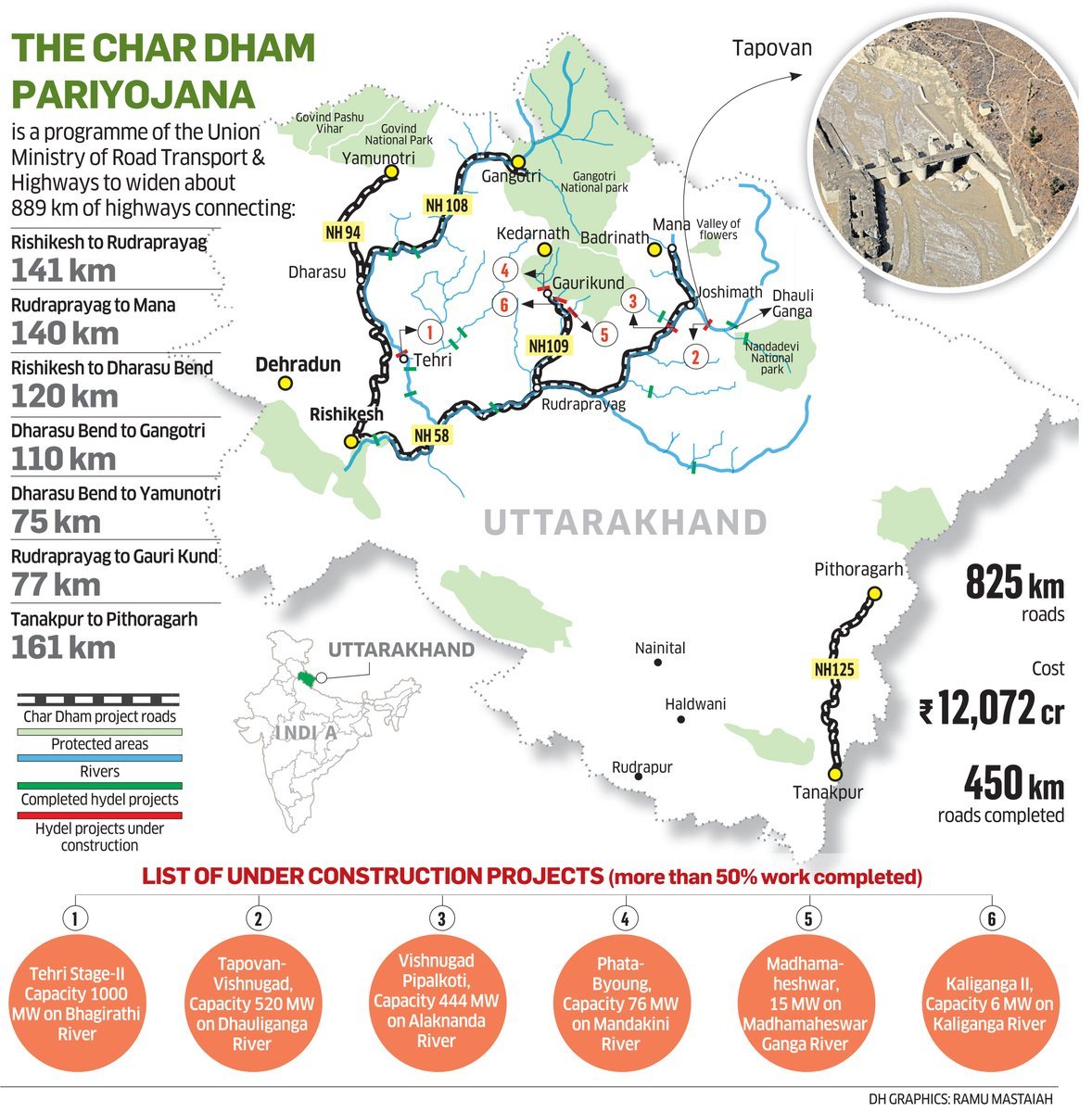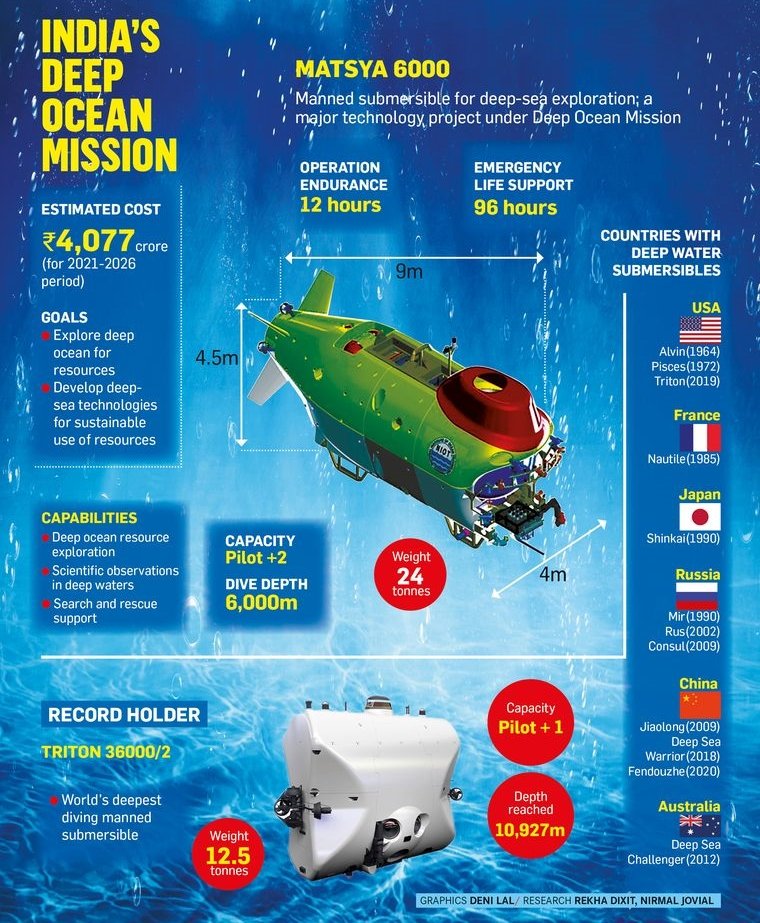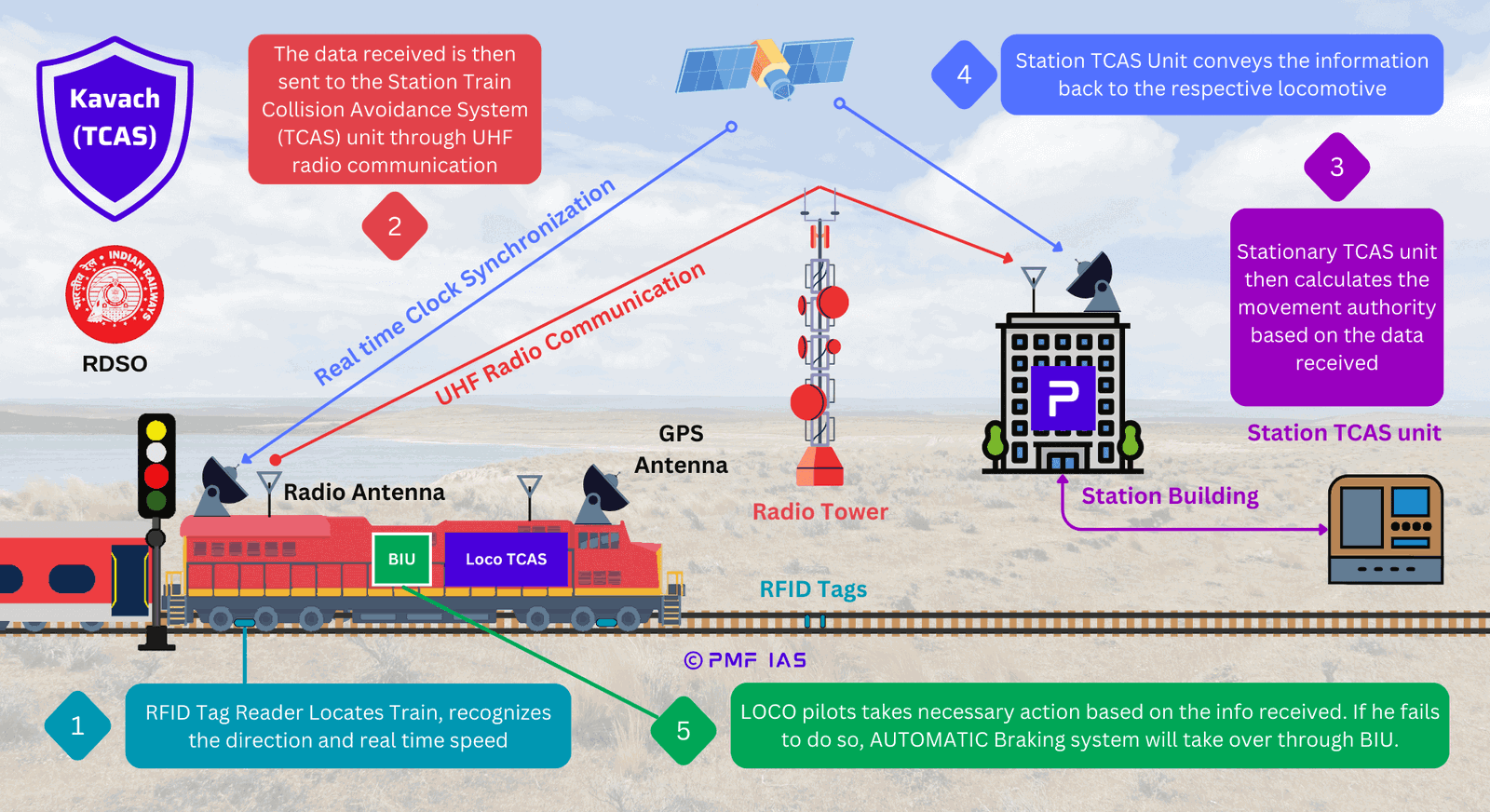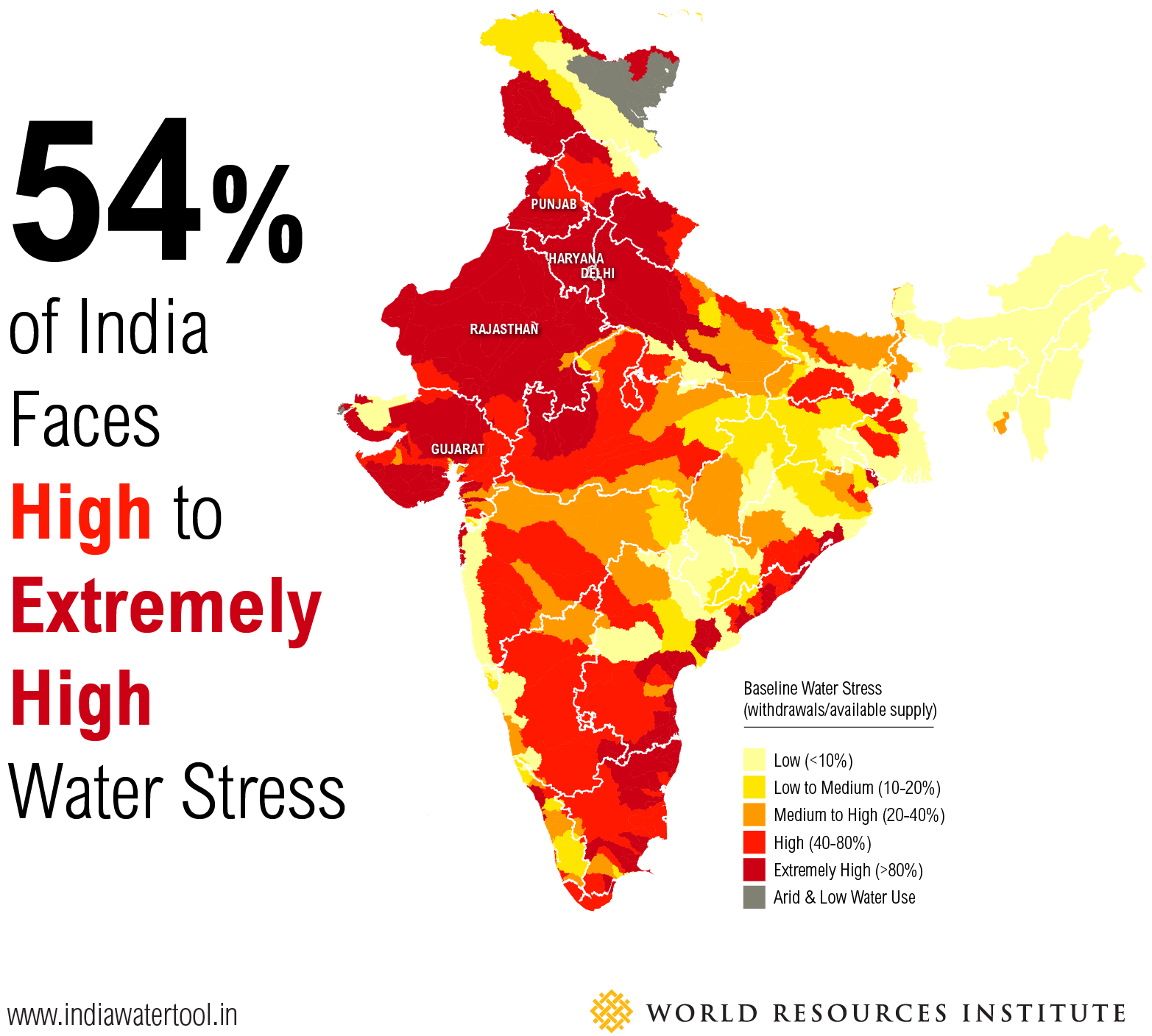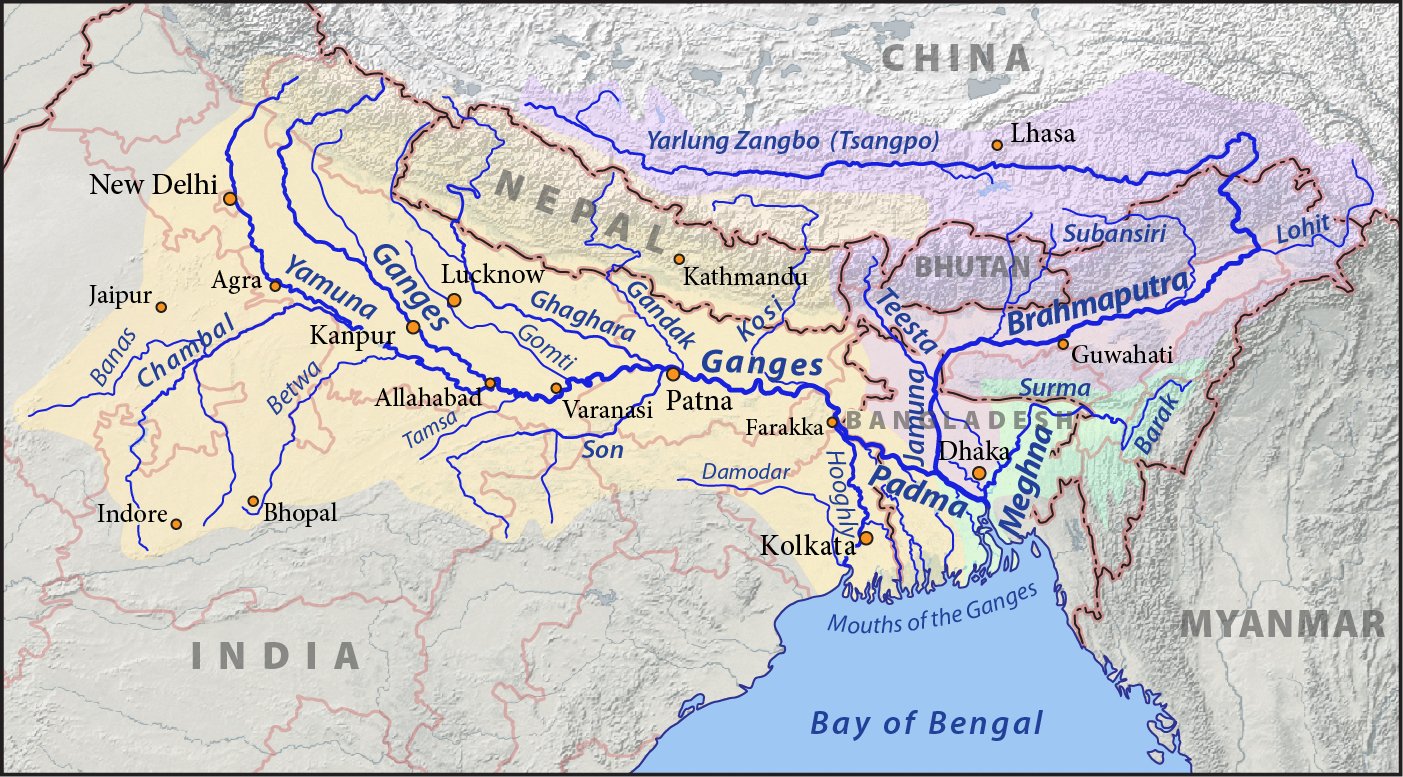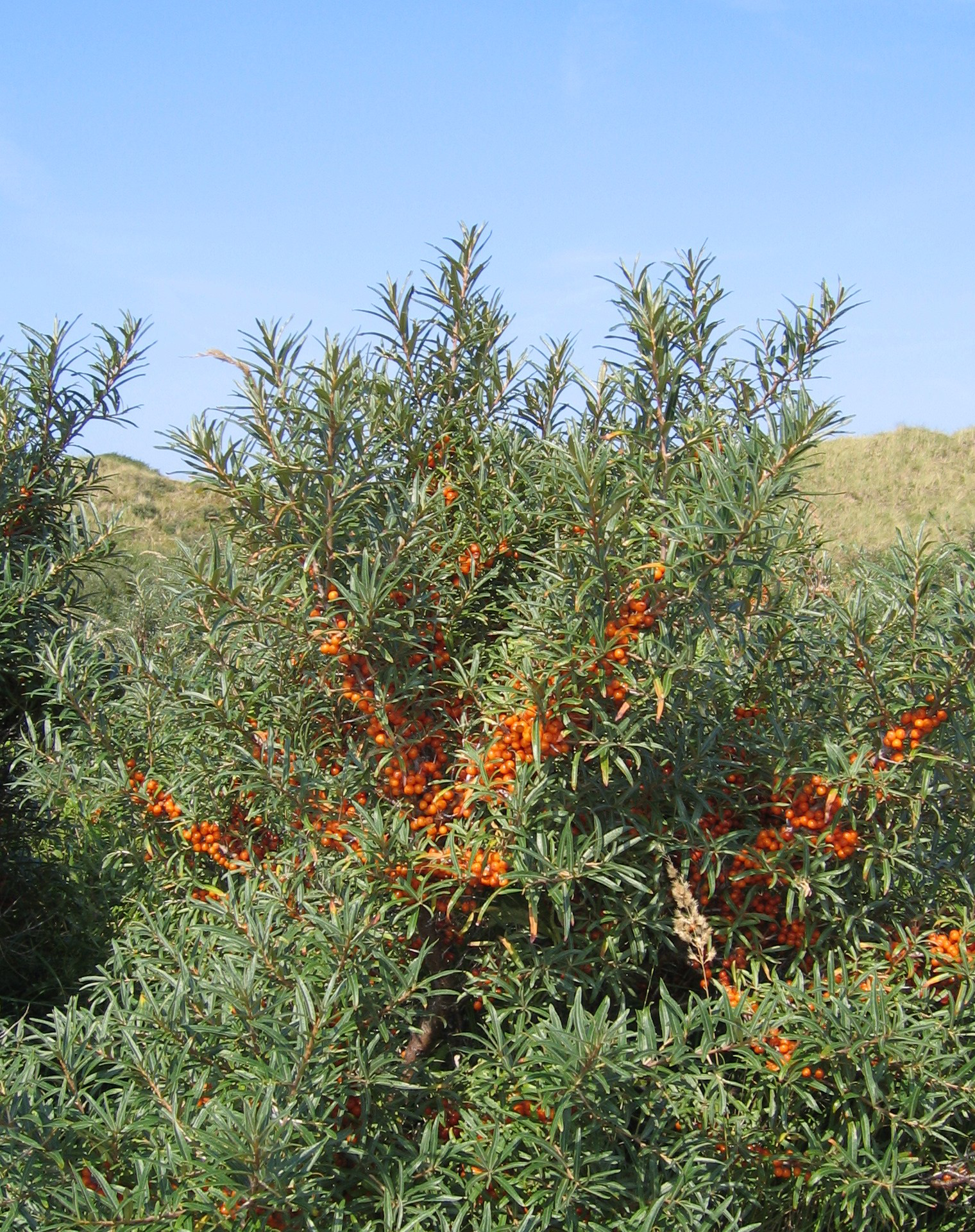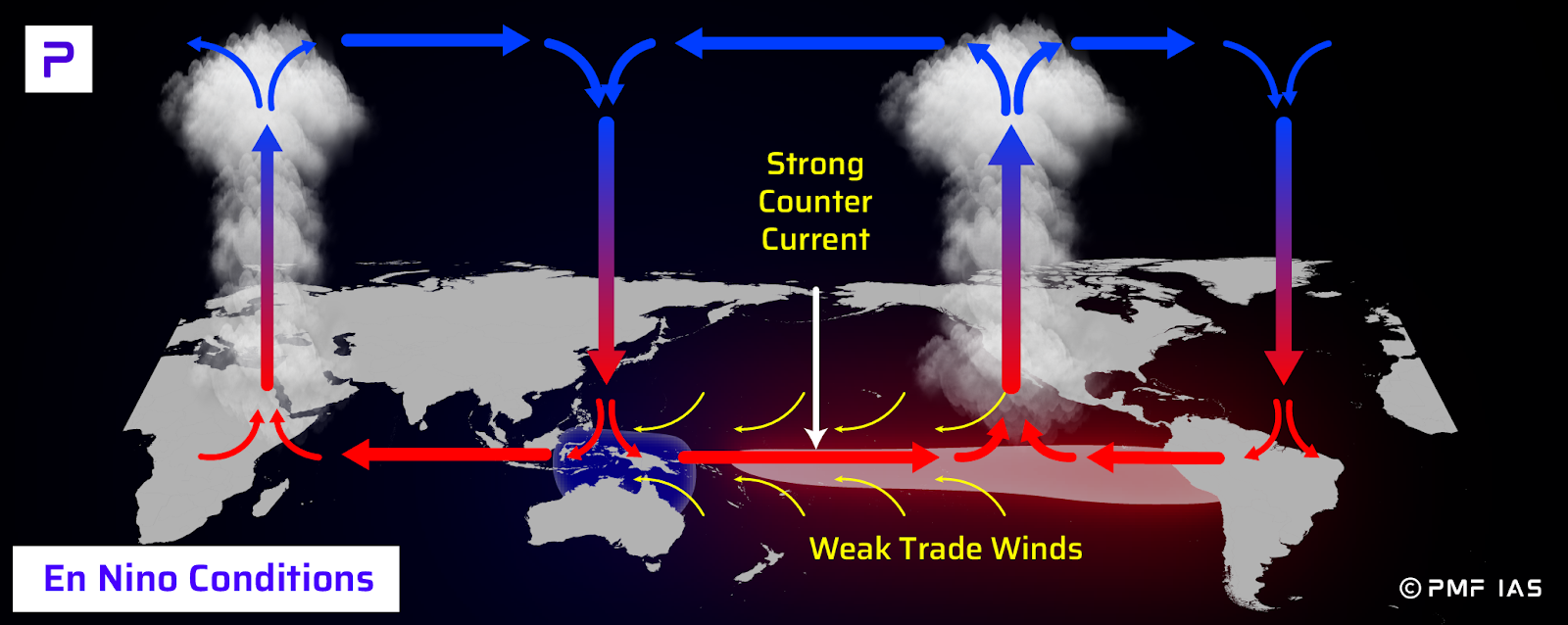
Current Affairs November 30, 2023: Parthenon Sculptures, Axolotls, Insolvency and Bankruptcy Code (IBC), Amplifi Portal 2.0, Pressmud, Analogue Wars
Subscribers of "Current Affairs" course can Download Daily Current Affairs in PDF/DOC
Subscribe to Never Miss an Important Update! Assured Discounts on New Products!
Must Join PMF IAS Telegram Channel & PMF IAS History Telegram Channel
{GS1 – Geo – PG – Climatology} Unseasonal Rains and Lightning Strikes
- Context (IE): Unseasonal heavy rainfall, accompanied by thunderstorms, hailstorms, and lightning strikes, was experienced in Gujarat recently.
- The reasons for unseasonal rains and lightning are:
- Cyclonic circulation over the Northeast Arabian Sea and adjoining Saurashtra and Kutch
- Western Disturbances
- Easterly trough
|
Western Disturbances
- Western disturbances are extratropical storms (low-pressure systems) originating over the Mediterranean Sea and the Atlantic Ocean and moving from west to east.
- Temperature and pressure contrasts between mid-latitudes and higher latitudes form them.
- They enter the Indian subcontinent from the northwest and bring heavy rainfall, particularly during winter.

Reasons for Lightning Strikes
- Interaction between any system and Western Disturbance.
- The first spell of activity after a long dry period leads to convective activity resulting in lightning.
Reason for Thunderstorms
- Moisture interacting with the Western disturbance.
- The active Intertropical Convergence Zone (ITCZ) may have supplied ample moisture.
{GS2 – MoCAFPD – Schemes} Pradhan Mantri Garib Kalyan Yojana (PMGKY)
- Context (PIB): The Cabinet has decided that the Central Government will provide free foodgrains to about 81.35 crore beneficiaries under the PMGKY for a period of 5 years from January 1, 2024.
- PMGKAY is operated by the Ministry of Consumer Affairs, Food and Public Distribution.
- Objective: To feed the poorest citizens of India by providing free grain through the Public Distribution System to all eligible households under the National Food Security Act (NFSA) 2013.
- PMGKAY will subsume the two subsidy schemes of the Department of Food & Public Distribution:
- Food Subsidy to Food Corporation of India (FCI) – For centralised procurement by FCI.
- Food Subsidy for decentralized procurement by states.
- Eligible households: Primary Households (PHH) and Antodaya Anna Yojana (AAY) households under NFSA, 2013.
Provision under NFSA
- Free Foodgrain: Rice, wheat, and coarse grains.
- Quantity: 35 kg per Antyoday Anna Yojana Household and 5kg per person to a Priority Household (as under NFSA, 2013).
PMGKY Vs. NFSA, 2013
- Under NFSA, 2013, beneficiaries pay subsidised prices called Central Issue Price (CIP) worth Rs.1, Rs.2, and Rs.3 for coarse grains, wheat, and rice, respectively.
- Under PMGKY foodgrains are provided free of cost.
Merger of PM-GKAY and NFSA
- In 2022, PMGKAY was merged with NFSA and extended until December 2023.
- Under this merger, the entire food grains under PM-GKAY and NFSA were made free of cost.
National Food Security Act, 2013
- Coverage and entitlement under Targeted Public Distribution System (TPDS)
- It covers 50% of the urban population and 75% of the rural population.
- Uniform entitlement of 5 kg per person per month.
- Food at subsidised prices: Rs. 3/2/1 per kg for rice, wheat, and coarse grains.
- However, the poorest of the poor households will continue to receive 35 kg per household per month under Antyodaya Anna Yojana (AAY).
- Identification of Households to be done by States/UTs under TDPS determined for each State.
- For the purpose of issuing ration cards, the eldest woman of the household of age 18 years or above is to be the head of the household.
- The Act provides for food security allowance in case of non-supply of entitled foodgrains or meals.
Coverage
- The free nutritious meal to pregnant women and lactating mothers and children up to 6 years of age under the Integrated Child Development Services (ICDS) scheme.
- The free nutritious meal to children in the 6-14 age group under the Mid-Day Meal Scheme.
- Pregnant women and lactating mothers will receive a maternity benefit of Rs. 6,000.
{GS2 – MoHUA – Initiatives} Amplifi Portal 2.0
- Context (TH): The Ministry of Housing and Urban Affairs has recently launched the Amplifi Portal 2.0.
- Amplifi stands for Assessment and Monitoring Platform for Liveable, Inclusive and Future-Ready Urban India portal.
- The initiative is a part of the Urban Outcomes Framework 2022.
- Objective: Make raw data from Indian cities available on a single platform for academics, researchers, and stakeholders to help data-driven policymaking.
- The Portal provides information on various services for several cities:
- Total diesel consumption.
- Number of water quality samples tested.
- Average annual healthcare expenditure.
- Total population residing in slums.
- Recorded fatalities from road accidents.
- Currently, 225 urban local bodies (ULB) have been on-boarded, and data for 150 cities is available on the portal.
Urban Outcomes Framework 2022
|
{GS2 – Polity – IC – Bodies – Constitutional} Finance Commission (FC)
- Context (PIB | TH): The Union Cabinet has approved the terms of reference for the 16th Finance Commission.
- The FC is a constitutional body constituted by the President under Article 280 of the Constitution.
- It is a Quasi-Judicial body constituted every 5th year or at such earlier time as the President deems necessary.
- It consists of a chairman and 4 other members to be appointed by the President. They are eligible for re-appointment.
Qualifications of the Members
- Qualifications of the members are to be decided by the Parliament, as provided in the Constitution.
- Accordingly, the Parliament has specified the following specifications:
- The Chairman should be a person with experience in public affairs.
- The members should be selected from amongst:
- A Judge of the High Court or one qualified to be appointed as one.
- A person who has specialized knowledge of finance and accounts of the government.
- A person who has wide experience in financial matters and administration.
- A person who has special knowledge of economics.
Recommendations
- The Finance Commission makes recommendations to the President on
- Distribution of net tax proceeds between the Centre and States and allocation between the states of respective shares of such proceeds.
- Principles that govern grants-in-aid to the States by the Centre.
- Measures needed to augment the Consolidated Fund of State to supplement resources of Panchayats and municipalities in the state.
- Any other matter referred to it by the President in the interests of sound finance.
- The Commission submits its report to the President, who lays it before both houses of the Parliament.
- The recommendations made by the Finance Commission are only advisory in nature and not binding on the government.
Terms of Reference of 16th Finance Commission
- The Commission shall make recommendations on the following matters:
- The distribution between the Union and the States of the net proceeds of taxes and the allocation between the States of the respective shares of such proceeds;
- The principles which govern the grants-in-aid of the revenues of the States out of the Consolidated Fund of India and the sums to be paid to the States by way of grants-in-aid of their revenues under Art 275 of IC; and
- Measures needed to augment the Consolidated Fund of a State to supplement the resources of the Panchayats and Municipalities in the State.
- The Commission may review the present arrangements for financing Disaster Management initiatives and make appropriate recommendations.
{GS3 – Agri – Crop} ADVIKA
- Context (PIB): ADVIKA, a new superior drought tolerant, climate smart chickpea variety is released.
Chickpea (or Bengal Gram)
- Chickpea is an annual legume plant of the pea family.
- It originated in the Mediterranean/southwest Asia and migrated to south Asia.
- It is rich in fibre, protein, iron, phosphorus, and folic acid.
Chickpea Production
Globally
- More than 90% of chickpea cultivation area is in South Asia.
- More than 70% of yield is lost due to drought and increasing temperatures.
India
- India is the India is the largest chickpea producer.
- Chickpea solely contributes nearly 50% of the Indian pulse production.
- Major chickpea producing states are Maharashtra, MP, Rajasthan, Gujarat, and UP.
Chickpea Growing Conditions in India
- Season: It is a rabi crop.
- Climate: Severe cold and frost are injurious.
- Rainfall: 600-900 mm per annum.
- Soil: Wide range of soils. But it is not suited to soils having a pH higher than 8.5.
- Maturity period: For desi type chickpea, it is 95-105 days and for kabuli type chickpea is 100-110 days.
{GS3 – Envi – RE} Pressmud
- Context (TH | IE): Pressmud (filter cake or press cake), a residual byproduct in the sugar industry, has been acknowledged as a valuable resource for green energy production.
- It is utilised as a feedstock for biogas production and subsequent purification to create compressed biogas (CBG).
Biogas
- Biofuels are fuels (solid, liquid, and gaseous) that are derived from biomass/organic matter.
- As biofuels emit less CO2 than conventional fuels, they can be blended with existing fuels to reduce CO2 emissions in the transport sector effectively.
- Biogas is a type of biofuel that is produced by anaerobic digestion of organic matter.

|
Biofuels Generation |
|||
|
Generation |
Feedstock |
Carbon Content |
Example |
|
First |
Food crops |
High carbon content |
|
|
Second |
Non-food biomass |
Carbon content less than 1st generation biofuels |
|
|
Third |
Microorganisms |
Carbon neutral (CO2 Emitted = CO2 Sequestrated) |
Biodiesel from algae |
|
Fourth |
Genetically engineered crops |
Carbon negative (CO2 Emitted < CO2 Sequestrated) |
Biofuels from algae, bacteria, & yeast |
Compressed Biogas (CBG)
- The biogas is purified to eliminate hydrogen sulfide (H2S), carbon dioxide (CO2), and water vapour and then compressed into CBG.
- CBG has methane (CH4) content of more than 90%.
- CBG, with a calorific value and properties is akin to Compressed Natural Gas (CNG).
- It can replace CNG, leveraging the abundant biomass resources in the country.
|
Advantages of Pressmud as a Feedstock for CBG
- Simplifies the feedstock supply chain: It helps avoid complexities in agricultural residue handling, which demands specialised biomass harvesting machinery.
- Moreover, feedstock is sourced from one or two sugar mills, unlike agricultural residue, which involves multiple farmers within a narrow 45-day window per year.
- No inorganic material: Pressmud quality is not a concern, unlike municipal solid waste, where inorganic material can harm anaerobic digesters.
- Eliminates pretreatment costs: It lacks the organic polymer lignin, unlike agri residue.
- Conversion efficiency: 25 tonnes of pressmud yield one tonne of CBG, while cattle dung needs 50 tonnes for the same gas output.
- Revenue generation for sugar mills.
Challenges of Pressmud as a Feedstock for CBG
- Alternative demands: Pressmud faces competition for use as fertiliser, in bio-composting, and use as fuel in brick kilns.
- Availability for a short period: CBG plants must store feedstock for the entire year, as sugar mills operate for a specific period. However, it is challenging because it undergoes decomposition.
Way Ahead
- States with high CBG potential from pressmud should enact bioenergy policies. For e.g., UP and Bihar have implemented supportive bioenergy policies for CBG plants.
- To prevent economic instability in CBG plants, the government should establish a mechanism to cap pressmud prices.
- Developing pressmud storage technologies that prevent methane emissions and minimise gas loss.
- Pressmud is a low-hanging fruit for the CBG industry and should be harnessed to address waste in sugar mills, provide sustainable energy, and supply organic fertiliser to soils.
Facts About India’s Sugar Industry
|
{GS3 – IE – Bankruptcy/Insolvency} Insolvency and Bankruptcy Code (IBC)
- Context (IE): Insolvency and Bankruptcy Board of India stated that data as of September 2023 revealed that creditors have realised Rs 3.16 lakh Cr. under the resolution plan approved under the IBC.
- IBC seeks to create a unified framework to resolve insolvency and bankruptcy in India.
- Objective: To resolve the bankruptcy crisis in the corporate sector, consolidate insolvency and bankruptcy proceedings, and revive the company in a time-bound manner.
- It is applicable to Individuals, Corporates, Partnerships, Limited Liability Partnerships, and personal guarantors to corporate debtors.
- Adjudicating authority: National Companies Law Tribunal (NCLT) for companies and LLPs and Debt Recovery Tribunals (DRTs) for individuals and Partnership firms.
- It provides for a time-bound process for resolving the insolvency of corporate debtors called the corporate insolvency resolution process (CIRP).
Insolvency Resolution Process
- Insolvency proceedings can be initiated either by the creditor (banks) or the loaner (defaulter).
- It is done by submitting a plea to the adjudicating authority, the National Companies Law Tribunal (NCLT).
- On acceptance of the plea, an Insolvency Resolution Professional is appointed.
- The power of management and board is transferred to the Committee on Creditors (CoC) (includes all financial creditors of a corporate debtor).
- The CoC will appoint and supervise the Insolvency Professional.
Institutional mechanism
- Insolvency Professionals (IPs): To conduct the resolution processes. These IPs will be members of Insolvency Professional Agencies (IPAs).
- Information Utilities (IUs): To collect/disseminate information to facilitate insolvency resolution.
- Regulator: Insolvency and Bankruptcy Board of India (IBBI) to regulate the functioning of IPs, IPAs and IUs.
- Adjudicators: For companies, the National Company Law Tribunal (NCLT) will adjudicate insolvency resolutions. For individuals, the Debt Recovery Tribunal (DRT) will adjudicate insolvency resolution.
- Committee of Creditors (CoC): It consists of financial creditors who will appoint and supervise the actions of IPs and approve the resolution plan.
Insolvency and Bankruptcy Board of India (IBBI)
Financial Creditors
Operational Creditors
|
Amendments
- The Insolvency and Bankruptcy Code (Amendment) Act, 2021 amended the Insolvency and Bankruptcy Code, 2016.
- It introduced an alternate insolvency resolution process for Micro, Small and Medium Enterprises (MSMEs) with defaults up to Rs 1 crore called the Pre-packaged Insolvency Resolution Process (PIRP).
- Unlike CIRP, PIRP may be initiated only by debtors.
- The debtor should have a base resolution plan in place.
- During PIRP, the management of the company will remain with the debtor.
Pre-Packaged Insolvency Resolution Process
Key features
|
Successes/Achievements of IBC
- Effective Recovery of Bad Debt: The average recovery rate under IBC has been 35-45%, compared with 25% through earlier mechanisms, strengthening the financial sheets of the banks.
- Comparatively Speedier resolution: The Standing Committee on Finance report (2021) noted that the time taken to resolve insolvency has reduced from 4.3 years to 1.6 years between 2017 and 2020.
- Attracting foreign investment due to improved investor confidence by providing improved recovery prospects.
- Promoting a creditor-centric approach by providing a clear hierarchy of claims to be settled and providing a structured mechanism for the resolution process.
- Promoting a culture of entrepreneurship by providing exit mechanisms for failed businesses and encouraging entrepreneurs to take calculated risks.
- NPA Resolution: According to RBI, IBC has been the most significant reform concerning NPA resolution.
Challenges of IBC
- Low recovery rates: Huge haircuts (large write-offs of loans) of as high as 95% point towards a deviation from the original objective of the code.
- Delays and Breach of Timelines: Though the average resolution timeline has come down, still more than 75% of the ongoing cases have been pending for over 270 days (the timeline stipulated in the Code).
- Limitation of DRTs/NCLT: Inadequate manpower (50% of posts in NCLT lying vacant), sluggish disposal of cases, huge pending cases, inadequate infrastructural facilities, etc.
- Poor infrastructure of the Information Utilities (IU) that provides access to credible and transparent evidence of default.
- Inadequate number of Insolvency Professionals (IPs) to manage the rising number of cases.
- Accountability of Committee of Creditors (CoC): Even though the CoCs have significant discretion in the resolution process, there is no mechanism to ensure accountability and transparency of its decisions.
Way Forward
- Provide funds and functionaries to DRTs and NCLT for timely disposal of cases.
- Leveraging greater expertise by appointing judicial members of NCLT at least at the level of High Court judges and specialised NCLT benches.
- Strengthen creditor rights by establishing a benchmark for haircuts, comparable to global standards.
- Capacity Building by training the lawyers, IPs, IPAs, and IUs to implement the law in its letter and spirit.
- End-to-end digitization of processes and improved data gathering by IUs to make the resolution process faster and maximize the realizable value of assets.
- Draft Framework for Cross Border Insolvency based on the UN Commission on International Trade Law (UNCITRAL) Model Law.
{GS3 – IS – Warfare} Analogue Wars
- Context (IE): Hamas’ use of underground tunnels against the Israeli Defense Forces highlights the necessity for modern militaries to be prepared for analogue warfare in today’s digital age.
- Analogue wars are conflicts that do not rely on digital or cyber warfare but instead focus on traditional forms of warfare, such as infantry, artillery, and airpower.
- It is the opposite of high-tech military warfare, which utilises advanced technologies such as artificial intelligence (AI), robotics, and cyberwarfare.
- Analogue warfare is becoming popular as it does not have the limitations of high-tech warfare.
Limitations of High-Tech Military Warfare
- Complexity: Operating and maintaining advanced technologies requires high technical expertise. This complexity also hampers integrating high-tech systems into traditional military operations.
- Vulnerability: Cyberwarfare can disrupt or disable these systems, and physical attacks can damage or destroy them.
- Lack of robustness: Equipment must be robust enough to withstand weather extremes and shock from vibrations or explosions. These cost a fortune, and as a trade-off, compromises are made.
- Dependency on external agencies: The military often lacks exclusive ownership of the entire system, creating unacceptable dependency on Original Equipment Manufacturers (OEMs).
- Susceptible to disruption: For e.g., a GPS denial will affect everything from navigation to weapon delivery.
Way Ahead: A Rethink is Required
- The adoption of technology is taking the defence system away from the fundamentals.
- Adopting technology also drives the training of human resources only technically. For e.g., in the mid-1990s, the Indian Navy opted to train all its officers as engineers.
- But it seems that analogue wars are still a preferred mode of warfare. For e.g., Chinese soldiers used sticks, stones and barbed wires in the 2020 Galwan clash.
{GS3 – S&T – Achievement} India’s Bioeconomy
- Context (PIB): India’s Bioeconomy recorded a twelve times increase in the last 10 years.
Bioeconomy
- Bioeconomy is the sustainable production, utilisation, and conservation of biological resources to provide goods, services, and information across all economic sectors for a sustainable economy.
Benefits of Bioeconomy
- Promotes sustainability by using renewable biological resources, reducing reliance on finite fossil fuels, and minimising environmental degradation.
- Economic growth: It stimulates the development of new industries, businesses, and products, leading to increased economic activity and job generation.
- Food security: It enhances agricultural productivity, develops new food sources, and promotes sustainable food production practices.
- Medical advancement by fostering the development of new pharmaceuticals, vaccines, medical devices, and diagnostic tools.
- Energy security by promoting renewable energy sources like biofuels.
- Industrial diversification: The bioeconomy diversifies industrial processes and products by developing bio-based alternatives to conventional materials.
- Biodiversity conservation by promoting sustainable land management practices, reducing deforestation, and restoring degraded ecosystems.
- Circular economy by developing strategies to reduce waste, reuse materials, and recycle resources.
Status of India’s Bioeconomy
- India’s bioeconomy has grown from $10 billion to $120 billion in 2023 in just 10 years.
- It is estimated to be >$300 billion by 2030.
- India is among the top 3 in South Asia and top 12 destinations for biotechnology in the world.
- India’s biotechnology accounts for 3% share in the global biotechnology industry.
- India has 2nd highest number of USFDA-approved manufacturing plants outside the US.
|
Key Sectors of India’s Bioeconomy
- Biopharmaceuticals: India accounts for 60% of global vaccine production
- Bioagriculture: In 2021, BT cotton, biopesticides, biostimulants, and biofertilisers contributed more than $10 billion to the economy.
- Biofuels: India is developing a range of biofuels, including ethanol, biodiesel, and biogas.
- Bio-industrial products: India produces various bio-industrial products, such as bioplastics, bio-lubricants, and biocomposites.
Initiatives for Bioeconomy in India
National Policy on Biofuels
- National Policy on Biofuels was launched in 2018 and amended in 2022.
- It aims to promote the production and utilisation of biofuels in India.
- It sets a target of 20% ethanol blending in petrol by 2025, five years ahead of the initial target of 2030.
National Biopharma Mission
- It was launched in 2017 to accelerate biopharmaceutical development in India.
- It is a joint initiative of the Department of Biotechnology (DBT) and the World Bank.
- The mission aims to foster entrepreneurship and indigenous manufacturing in the biopharmaceutical sector by creating an enabling ecosystem.
Bio-NEST
- Bio-NEST, launched by BIRAC, envisions fostering the biotech innovation ecosystem in the country.
- Through Bio-NEST, BIRAC has supported 65 bio-incubators for budding entrepreneurs.
Bioclusters
- Four bioclusters have been established at Faridabad, Bangalore, Kalyani, and Pune.
- The aim is to establish India as a world-class bio-manufacturing hub through a nationwide technology development and translation network.
National Mission on Bioeconomy
- It was launched in 2016 under the Ministry of Science and Technology.
- Its focus was to boost the rural economy.
- It aimed to promote the bioeconomy across various sectors, including agriculture, forestry, biotechnology, healthcare, and industrial biotechnology.
{Prelims – A&C – Art} Parthenon Sculptures
- Context (IE): A diplomatic dispute arose between Greece and the UK over Parthenon Sculptures housed at the British Museum.
- A formal request for the permanent return to Greece of all of the Parthenon Sculptures in the Museum’s collection was 1st made in 1983.
- The Parthenon was constructed in the 5th century BC, reflecting the power and dominance of the then city-state of Athens.
- It became a symbol for the modern nation state of Greece following independence from the Ottoman Empire in 1832.
- It adorns the Parthenon temple in Athens, dedicated to the goddess Athena.
- Material used: Crafted from Pentelic marble, a high-quality white marble quarried near Athens, enhancing durability and aesthetic appeal.
- They consist of:
- A frieze that shows the procession of the Panathenaic festival (the commemoration of the birthday of the goddess Athena);
- A series of metopes (sculpted relief panels) depicting the battle between Centaurs and Lapiths at the marriage-feast of Peirithoos; and
- Figures of the gods and legendary heroes from the temple’s pediments.
- Around 50% of the original architectural decoration on the Parthenon is now lost, having been destroyed over many centuries in the ancient world and later.
- Ownership Dispute: Ongoing controversy between Greece and the UK regarding repatriation. While Greece asserts cultural heritage rights, the British Museum maintains legal acquisition by Lord Elgin.
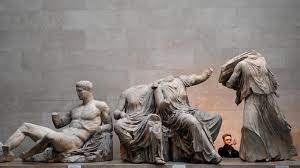
{Prelims – Envi – Species} Axolotls
- Context (IE): Scientists from Mexico have launched the ‘Adoptaxolotl’ fundraising campaign to support the conservation of Axolotls.
- The axolotl is a species of salamander.
- The species is found only in Lake Xochimilco, Mexico City.
- IUCN Status: Critically endangered.
- Axolotls are known for their neotenic characteristics, meaning they retain their aquatic larval features throughout their lives.
- They have feathery gills that protrude from the sides of their heads, enabling them to breathe underwater.
- Axolotls don’t have legs when they hatch; they develop them a few weeks later.
- Axolotls exhibit a wide range of colors, including brown, black, albino, golden, and spotted varieties.
- They have exceptional regenerative abilities. They can regrow entire limbs, parts of their heart, and even portions of their brain.
- Axolotls are carnivorous and feed on small fish, insects, and invertebrates.
- Life span: 10–15 years.
- Threats: Habitat loss, water pollution, and invasive species.

{Prelims – S&T – Defence} Yard 12706
- Context (LiveMint): The Ministry of Defence unveiled crest of Yard 12706 (Imphal), the third amongst the four Project 15B stealth guided missile destroyers.
|
- It is designed by the Indian Navy’s Warship Design Bureau and built by Mazagon Dock Shipbuilders Limited (MDL), Mumbai.
- It is a potent and versatile platform equipped with state-of-the-art weapons and sensors, including surface-to-air missiles, anti-ship missiles and torpedoes.
- It is powered by Combined Gas and Gas (COGAG) propulsion, capable of achieving speeds in excess of 30 knots.





![PMF IAS Environment for UPSC 2022-23 [paperback] PMF IAS [Nov 30, 2021]…](https://pmfias.b-cdn.net/wp-content/uploads/2024/04/pmfiasenvironmentforupsc2022-23paperbackpmfiasnov302021.jpg)
